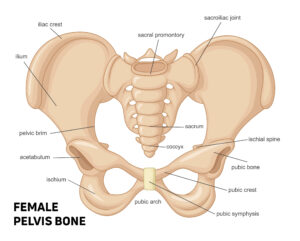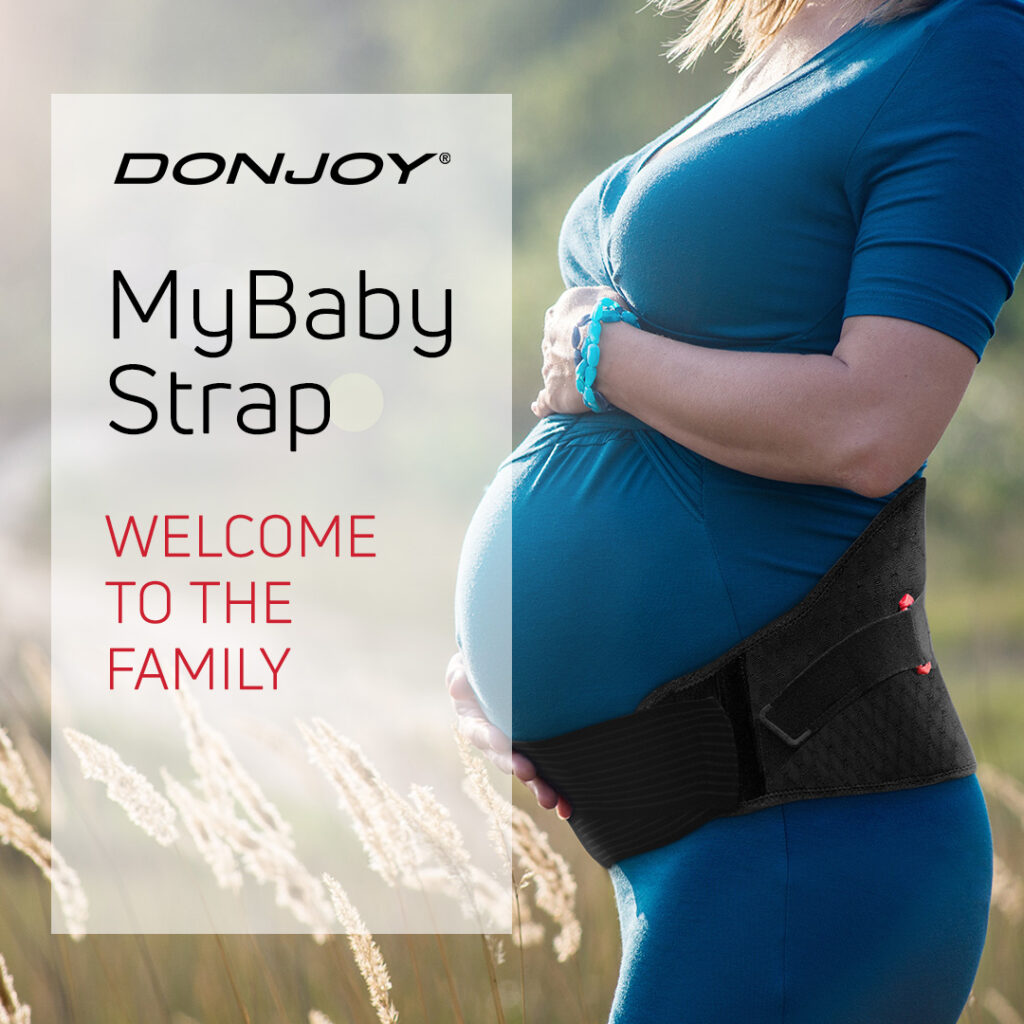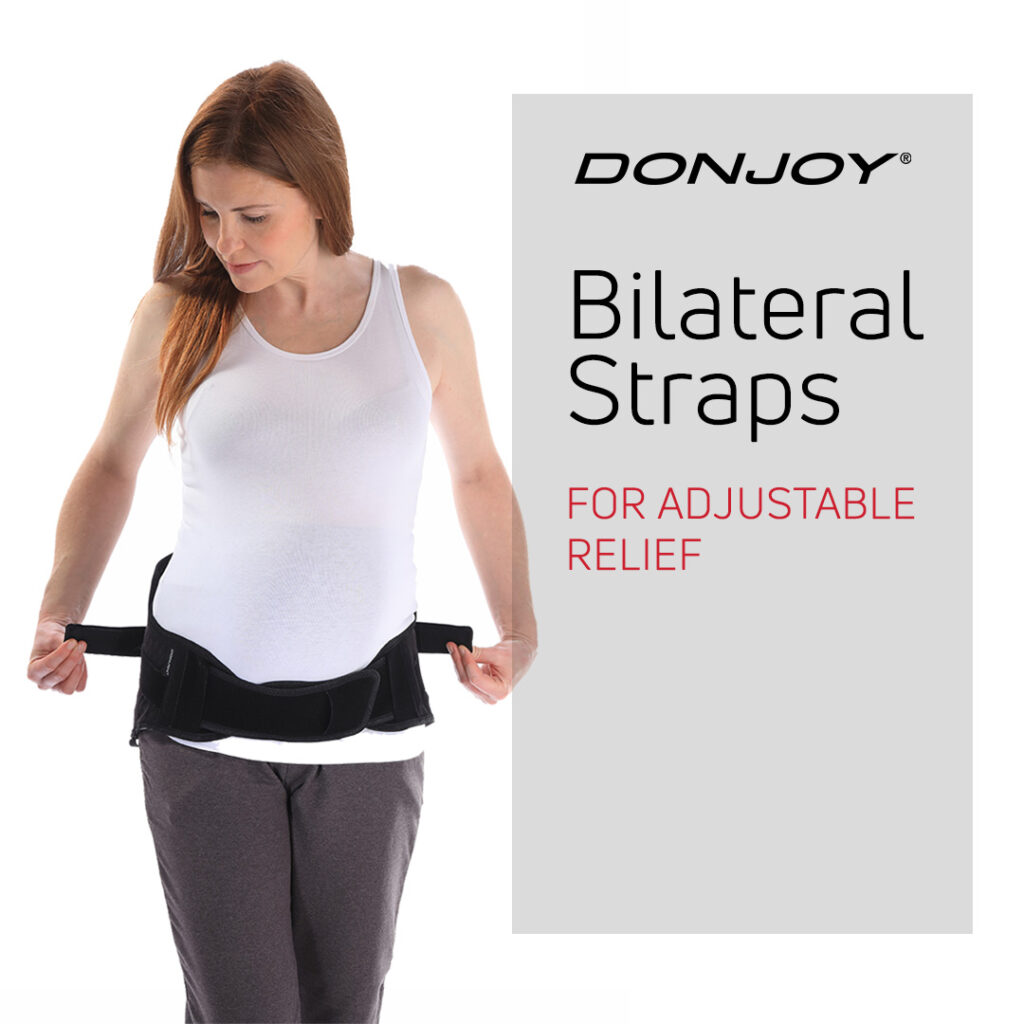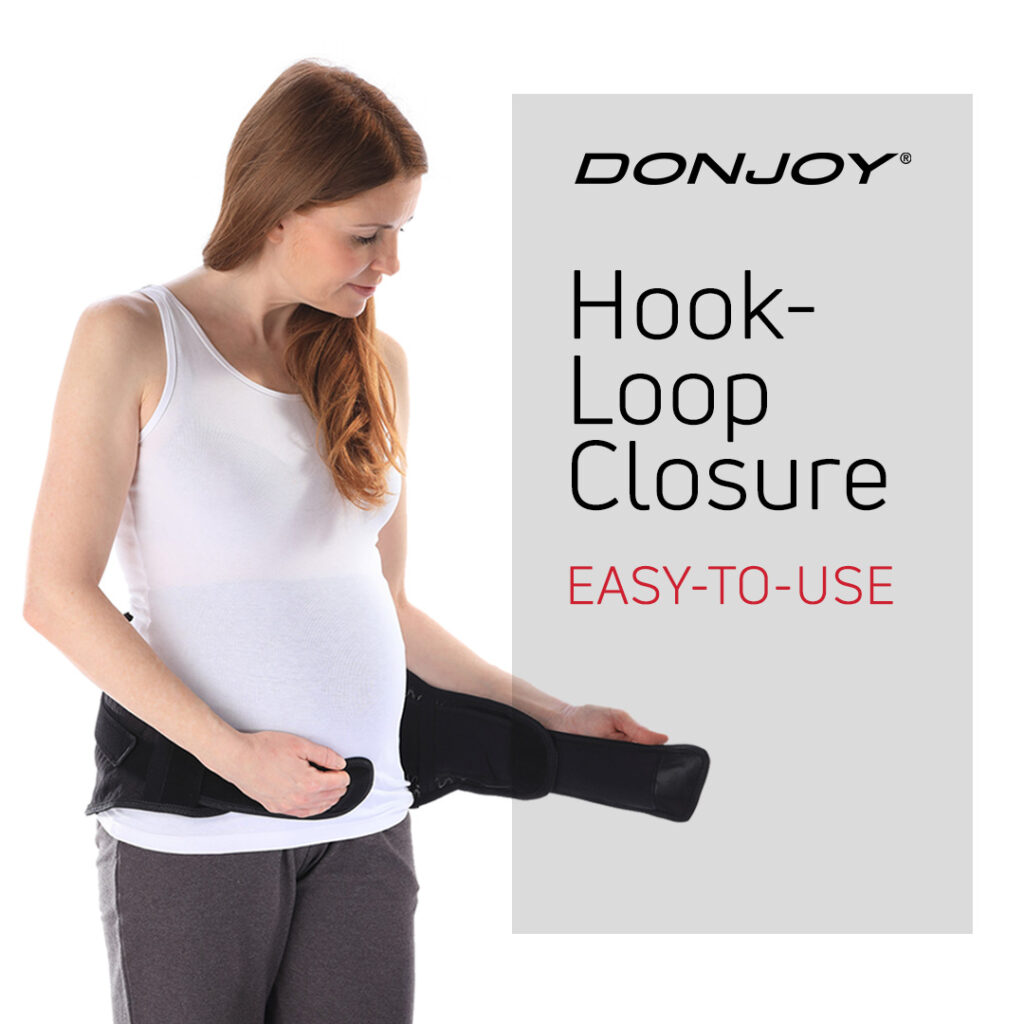Pregnancy pain is a common experience for many women, but it can often have a negative impact on their work lives and quality of life. Remedies for pelvic pain and low back pain during pregnancy often focus on water exercise and physiotherapy, which are not always practical solutions, but a growing number of clinical studies also support the role maternity support belts can play in reducing this pain.
There are two common types of pain during pregnancy:
Pelvic girdle pain
Pelvic girdle pain is defined as pain in the symphysis and/or between the posterior iliac crest and the gluteal fold, particularly in the vicinity of the sacroiliac joint.
There are several causes for this, but they tend to stem from hormonal and mechanical changes in the body, as internal organs move and ligaments soften to make room for the birth of the baby. During pregnancy, an increase in the hormone relaxin can cause increased laxity of the ligaments of the pelvic girdle, with the resulting increase in range of movement in the pelvic joint causing pain.1
While typically mild to moderate, pelvic girdle pain is reported as the most common reason for pregnant women taking sick leave, with studies reporting a prevalence of 4%-76.4% in women during pregnancy
Low back pain
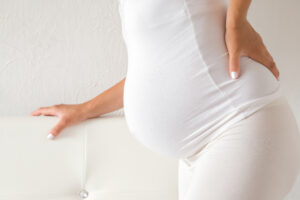
Often beginning in the second trimester, low back pain is defined as pain between the costal margins and the inferior gluteal folds, which may be associated with pain referred down to the leg. Usually accompanied by painful limitation of movement, low back pain often interferes with quality of life and daily living.
The cause of low back pain is related to additional stress placed on the back as a result of changes in the body during pregnancy. It is normal to gain 20-40 pounds in weight during pregnancy, and as the abdominal muscles stretch, they lose their ability to maintain posture, causing the lower back to support the increased weight of the torso. Increased axial loading results in increased spine compression, which leads to pain.
Low back pain is often considered “normal” in pregnancy, with studies reporting a prevalence of 50%- 71.3% in pregnant women.6 As with pelvic girdle pain, low back pain is another leading cause for pregnant women seeking sick leave.2
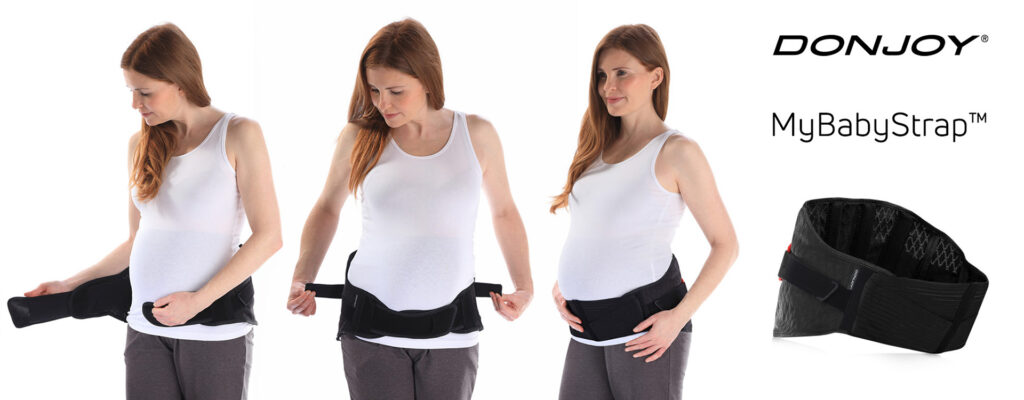
How a maternity support belt can help reduce pregnancy pain
A maternity belt is a supportive garment designed to be worn during pregnancy to provide support to the lumbar spine or pelvic regions, thereby helping to relieve pain.
The intended effects include:
- Compressing the body to increase proprioception
- Reducing mechanical loading of the localized weight
- Stabilising the lumbar spine and pelvis
- Stimulating the action of the muscles around the abdomen, spine and pelvic floor
A range of recent studies3,4,5 have demonstrated the effectiveness of maternity belts in reducing both pelvic girdle pain and low back pain, as well as providing improved stability and reducing the risk of falling during pregnancy.
Convenient, safe, low cost, and easily accessible for pregnant women, it is common for specialists to recommend maternity belts, especially alongside other therapies.
MyBabyStrap®
DonJoy’s MyBabyStrap® is a lumbar maternity belt designed to help reduce pain and discomfort during and after pregnancy. It is indicated for
- Lower back pain
- Pelvic pain
- Sacroiliac pain
- Postural instabilities
- Discomfort due to stretching and expansion of the abdomen
- Back support after birth
MyBabyStrap includes a number of features to help provide functional, easy-to-use support for pregnant women.
Thanks to itsmodular design, the support is easy to adjust, making it adaptable to all stages of pregnancy and also after birth. This includes an adjustable back pad and four rigid posterior stays to help provide extra support and compression in the lumbar area, and bilateral straps that can be tightened to help provide additional relief. It also comes with a removable elastic strap for lower abdominal support.
MyBabyStrap’s anatomical shapefollows the natural contours of a pregnant body for a comfortable fit, with no pressure on the abdomen. Its thin, soft, and breathable fabric and ergonomic front panel also help to provide comfort whether sitting or standing, while the design includes stylish details for a more fashionable and attractive appearance.
Finally, the belt is easy to fit, with a simple hook-loop closure that allows patients to quickly and simply adjust it to reach the desired level of comfort. It comes in one size that fits waist circumferences from 80 to 150 cm.
REFERENCES
1. Vleeming A, Albert HB, Ostgaard HC, Sturesson B, Stuge B. European guidelines for the diagnosis and treatment of pelvic girdle pain. Eur Spine J. 2008;17(6):794-819.
2. Kristiansson P, Svärdsudd K, von Schoultz B. Back pain during pregnancy: a prospective study. Spine (Phila Pa 1976). 1996;21(6):702-709.
3. Kordi R, Abolhasani M, Rostami M, Hantoushzadeh S, Mansournia MA, Vasheghani-Farahani F. Comparison between the effect of lumbopelvic belt and home based pelvic stabilizing exercise on pregnant women with pelvic girdle pain; a randomized controlled trial. J Back Musculoskelet Rehabil. 2013;26(2):133-139.
4. Flack NA, Hay-Smith EJ, Stringer MD, Gray AR, Woodley SJ. Adherence, tolerance and effectiveness of two different pelvic support belts as a treatment for pregnancy-related symphyseal pain – a pilot randomized trial. BMC Pregnancy Childbirth. 2015;15:36.
5. Bertuit J, Van Lint CE, Rooze M, Feipel V. Pregnancy and pelvic girdle pain: Analysis of pelvic belt on pain. J Clin Nurs. 2018;27(1-2):e129-e137.
6. Kovacs FM, Garcia E, Royuela A, González L, Abraira V; Spanish Back Pain Research Network. Prevalence and factors associated with low back pain and pelvic girdle pain during pregnancy: a multicenter study conducted in the Spanish National Health Service. Spine (Phila Pa 1976). 2012;37(17):1516-1533.

